
views
X
Research source
- It may be embarrassing, but using an anti-fungal cream and letting the affected skin breathe uncovered is going to be the fastest way to heal![2]
- Covering the ringworm with a bandage or makeup may seem like a logical choice, but that can lock in moisture and slow down the healing process.
- If you do use makeup, you absolutely must sanitize any brushes after you’re done since ringworm is contagious and it might stick around on any tools you use.
Concealing Your Ringworm

Wrap a scarf around your upper scalp. If the ringworm is present at the top of your face, forehead, or hair line, it might be possible to hide it with a scarf or headband. Stand in front of the mirror and practice positioning the scarf on your head. When you get it positioned, pin it down with bobby pins to hold it in place. Be warned, however, that covering ringworm with fabric can sometimes make it itchy. You’ll also need to regularly wash the scarf or headband or risk spreading ringworm elsewhere.
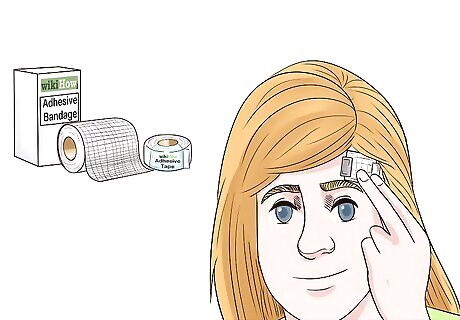
Apply a loose-fitting bandage to the infected area. If you have a ringworm patch on your face and must cover it, get an adhesive bandage that's large enough to cover your patch. Then, carefully place the bandage on to your face. Replace this bandage as often as possible to prevent the accumulation of moisture. Wash your hands both before and after handling the bandages to prevent spreading your ringworm. Make sure that the bandage fully covers the raised skin, otherwise you risk irritating the infected area.
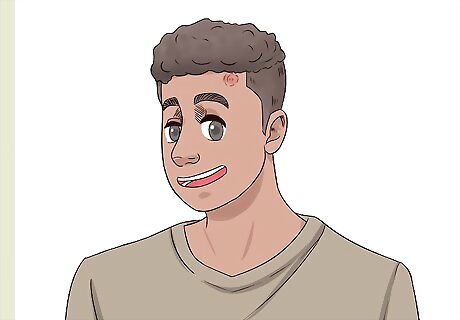
Leave it uncovered as often as possible. This is actually the best possible way to allow your skin to heal. If you cover your ringworm with bandages or makeup, you run the risk of suffocating the skin and spreading the infection. The moisture held against the skin can also slow down the healing process. For example, if your ringworm was located on the lower body, it would be advisable to wear loose-fitting clothing to allow for air circulation.
Hiding Ringworm with Makeup

Talk with your doctor before applying makeup to your ringworm. Most dermatologists will not suggest applying any product to your skin when it is infected. However, if you must cover your ringworm, a doctor can offer suggestions regarding how to do so safely. It’s especially important that you wash your hands in hot water and soap after every time you touch the infected area. In addition, any tools that you use to apply the makeup, such as brushes, and the makeup itself can continue to spread ringworm if precautions are not taken.
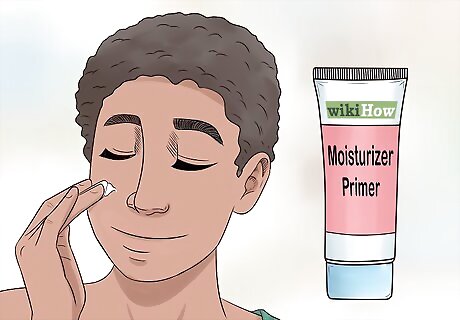
Apply a moisturizer primer or face cream on to your skin. Place a few drops of an oil-free product on your fingertips and rub it into the non-infected skin. Keep going until the product is no longer visible and your skin looks hydrated. Lastly, repeat this same process with the area infected by ringworm, taking care to touch no other part of your face. Don’t touch the bottle to apply the cream to your ringworm. Instead, squeeze a bit on to a tissue and dip your fingers into this. Then, toss the tissue. Use this same method for other steps.
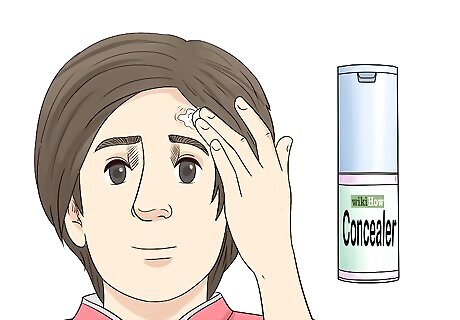
Rub concealer on to your face using your fingertips. Put a few drops of concealer on to a piece of tissue. Then, dip your fingertips into the concealer and dot it on your face. Rub the concealer in until it is blended. Finish by dabbing concealer on to the ringworm areas. Blend until smooth. It’s best to choose a concealer, foundation, and powder that closely matches your skin tone. If you are worried about redness, you can get a concealer with a green undertone. Using your fingertips to apply the concealer actually helps to create a smoother finish, as your body heat somewhat liquefies the makeup. You may need to apply more than 1 layer of concealer depending on how much coverage you want.
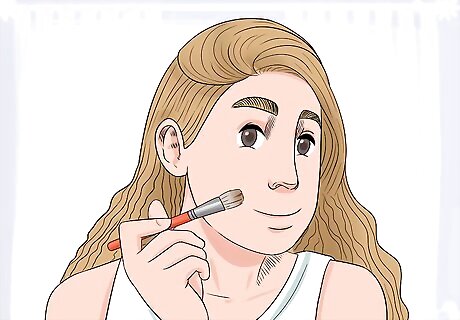
Cover your face in foundation using a brush. Pour a bit of foundation on to a fresh tissue. Dip your makeup brush into the foundation and dab it on to your skin. Continue until your skin is covered and smooth. Apply foundation to your ringworm area last and immediately sanitize your brush afterwards. You can sanitize your brush by soaking it in bleach and hot water. Make sure that this will not damage your brush by checking with the manufacturer.
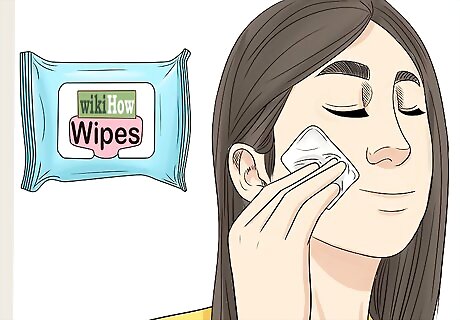
Remove makeup carefully using wipes. If your skin will tolerate it, use makeup remover wipes at the end of each day. Use a separate wipe for each area with ringworm and throw it immediately away afterwards. If you use a washcloth to clean your face, you must use a separate one for any infected areas. You must sanitize any washcloths used by washing them in hot water after each use. Otherwise, you risk re-infection. Don’t scrub your face roughly when removing the makeup or you risk irritating the skin further and possibly creating a secondary infection.
Treating Your Ringworm
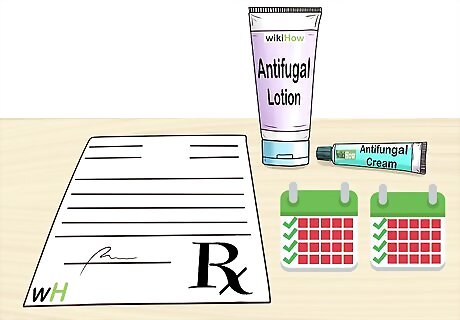
Take a prescription antifungal medication for up to 8 weeks. If you suspect that you have ringworm, it’s important to reach out to your doctor as soon as possible. Ringworm can spread from your face to other areas. You’ll be prescribed an oral antifungal medication that will gradually kill off the infection and make it less likely to spread. Make sure to take the full course of your medication. If you quit it early, then the infection can return. Your doctor might also recommend a topical antifungal cream or lotion. Follow their directions for application. Griseofulvin is the most commonly prescribed ringworm medication. You can take it along with high-fat foods, such as ice cream, to increase absorption and effectiveness.
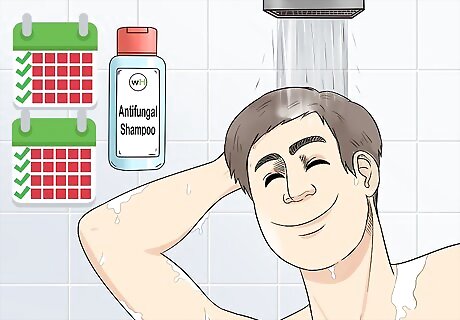
Use an antifungal shampoo for up to 8 weeks. If your ringworm is anywhere near your hair line, your doctor will likely suggest an anti-fungal shampoo. Any over-the-counter shampoo with selenium sulfide will work. Twice a week apply the shampoo when showering. Keep it on your scalp for 10 minutes after lathering and then rinse. Some doctors will suggest using fungal shampoo to prevent the spread of ringworm into your hair, even if it is currently just on your face.

Seek additional treatment if you develop swelling around the ringworm. A tender, lumpy bump called a kerion can be a sign that you are experiencing an allergic reaction to the ringworm fungus. Kerions often develop on the scalp, including the edges of your face. Talk with your doctor about treating a kerion with oral steroids in order to minimize hair loss. Depending on the size of the kerion, your doctor may have to lance it to drain the pus. If this is the case, you will not be able to apply makeup or other cosmetic products to the area until it is fully healed.


















Comments
0 comment